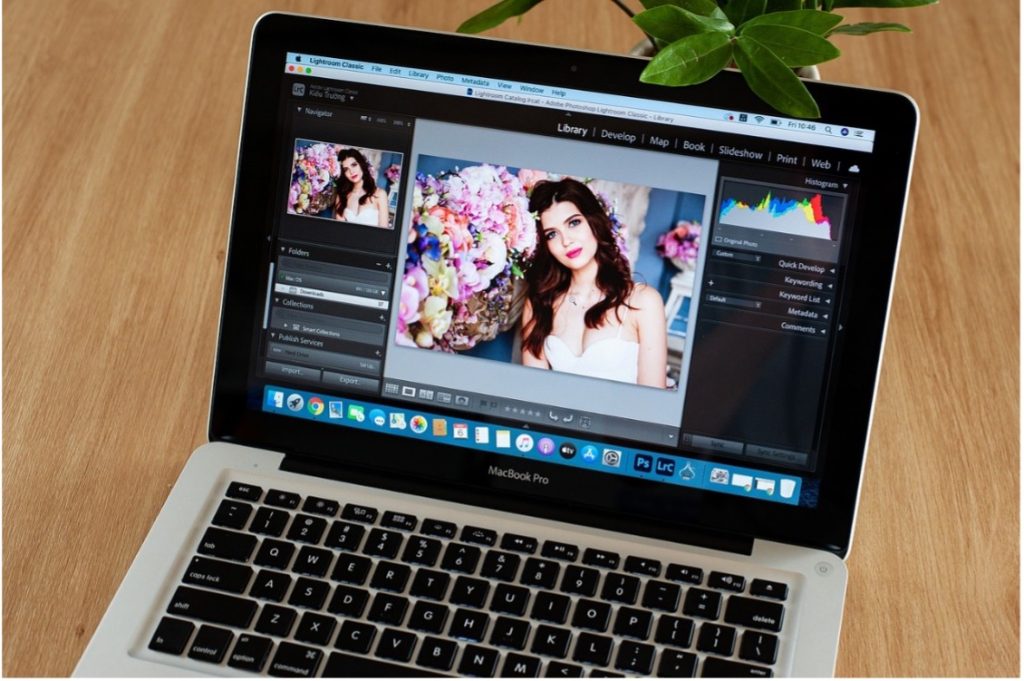By: Mia Shipley, Staff Writer
Since 2021, generative artificial intelligence (AI) has taken the technology world by storm. The development of AI algorithms like ChatGPT and Midjourney have revolutionized the way we interact with information. Students and professionals have turned to AI to aid in designing parts for spaceships, reading dozens of academic articles at once, writing Excel formulas, and much more. [1] Despite its impressive uses, AI has posed problems for many classes of people – notably artists. After contributing to the development of generative AI the creative software company Adobe now finds itself rethinking AI’s costs and benefits.
Generative AI combines data to train an algorithm, which may then produce answers to prompts based on what it has learned. When it comes to art, AI must have references to pull from for its text-to-image feature. Often, the artists has not expressly permitted AI’s use of the artwork, as in the case of Adobe.
Adobe has long been a giant in the digital art industry. Its programs, such as Illustrator, Photoshop, and others under the Creative Cloud, have given artists access to trailblazing tools. Within the past year, however, Adobe has been under intense scrutiny by users for changing their terms of service to require artists to allow Adobe AI access to their content. [2] The conditions added that techniques like “machine learning” would be used to analyze the accessed content to improve its systems. [3]
Adobe users were outraged that their art was to be deliberately used in AI algorithms. The company backtracked on its terms and tried to explain that its wording did not reflect its actual intent. Yet, this controversy came at a time in which tensions between AI and artists were high, and creators were tired of AI perpetuating the misuse of their intellectual property. [4] Artist-run organizations like Concept Art Association and Artist’s Resisting Exploitation advocated for the protection of art, and the topic garnered global attention on platforms like TikTok, Reddit, and Instagram. [5]
Adobe is attempting to mend its relationship with its users by launching Content Authenticity, a new app being added to the Creative Cloud. Content Authenticity is part of Adobe’s wider Content Authenticity Initiative which is “committed to promoting widespread adoption of Content Credentials.” [6]
The app promises impressive features that will allow artists to ensure that their ownership of the art is protected. Content Authenticity will allow artists to sign their work with credentials that are “durable and persistent” through the use of “secure metadata, invisible watermarks, and digital fingerprinting technology.” [7] These features will allegedly withstand screenshots and work even if one defense is compromised. [8] With this, owners of art will be able to track the history of their arts usage. When users have the Google Chrome extension they will also see exactly where their art has been used on the internet.
Another new feature proving to be just as important to artists is the ability to opt out of generative AI training. Artists may use the Content Authenticity features to signal to other AI algorithms that the artwork should not be used. [9] With this, artists can expressly deny consent for their intellectual property to be used in generative AI, even if they are unaware that AI has access to it at all.
If the Content Authenticity app works as intended, it could make a substantial difference in the lives of artists and the field of intellectual property. Parent companies of AI generators have so far been able to dodge copyright infringement claims because it can be difficult to trace the artwork in controversy amongst potentially billions of images. Yet, in August 2024, a first-of-its-kind lawsuit brought by artists against Stable Diffusion was allowed to proceed on all trademark and copyright infringement claims. [10]
Adobe’s Content Authenticity app may be able to provide concrete evidence in a case like that against Stable Diffusion. Where an artist can concretely prove the ownership of their art, track its location and usage, and directly opt out of AI training, it could prove difficult for AI companies to argue otherwise.
The limited beta version of Content Authenticity was published on October 8th, and the final version will be available to everyone or free sometime next year. [11]
[1] https://www.nytimes.com/interactive/2023/04/14/upshot/up-ai-uses.html
[3] Id.
[4] https://www.newyorker.com/culture/infinite-scroll/is-ai-art-stealing-from-artists
[5] https://www.conceptartassociation.com/advocacy, https://www.artistsresist.org/
[7] Id.
[8] Id.
[9] Id.
[10] https://www.hollywoodreporter.com/business/business-news/artists-score-major-win-copyright-case-against-ai-art-generators-1235973601/ [11] https://www.axios.com/2024/10/08/adobe-content-authenticity-digital-signature
